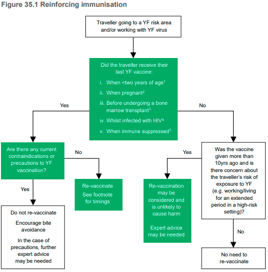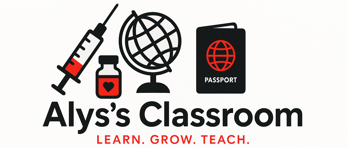Other useful links and further reading:
Probably the most useful resource for Yellow Fever info is the Yellow Fever Zone hosted by NaTHNaC. The Yellow Fever Zone contains clinical and administrative resources for health professionals and other staff responsible for administering yellow fever vaccine and for those managing a YFVC. There are loads of useful factsheets to give to patients, even if you are not a YFVC, such as the one about being over 60, HIV and YFV, and exemption letter templates. Do have a browse if you need to know more about this important vaccine.
Updates & News
30th June: Expect some disruption to supply of Stamaril. Sanofi has advised NaTHNaC that there will be a disruption in supply of the yellow fever vaccine Stamaril in the UK. The vaccine is expected to be out of stock for 2-3 weeks.
19th Dec 2024: Information is published every two years by the WHO on yellow fever requirements for each member state and we can expect to see some country recommendation changes in 2025. Remember that one of the joys of travel health is that it can actually be detrimental to commit things to memory so remember to keep forgetting everything you have learned about each country requirement - always consult the database!!
March 2024 Green Book chapter updated and now linked through NaTHNac for easy access. Changes were mainly around reinforcing immunisation with a useful flow chart for decision-making in this area. Although most vaccinees will probably have life-long immunity, reinforcing immunisation should be considered for those who received their initial yellow fever vaccination:
when aged less than two years old
during pregnancy
whilst infected with HIV
when immune suppressed
before undergoing a bone marrow transplant
See picture from the Green Book
November 2021 A new YFV checklist was created by Public Health Scotland. Just as an extra safeguard around precautions and contraindications. Sensible stuff. This was updated again in March 2024 and includes advice on electronic signature-adding. See the bits 'n bobs section below for more information about serious adverse events history.
March 2021 Some lovely new maps started appearing on NaTHNaC. Much easier to read and interpret risk.
2020 Training recommendations were tightened to ensure EVERYONE who is giving a yellow fever vaccine has had the specific NaTHNaC training EVERY TWO YEARS. No more cascading to teams after one person has done the training. Are YOU up to date with yours? Time goes by so fast these days...
2019 Sadly after a couple of deaths attributed to the vaccine, precautions were tightened in those with weakened immunity and those aged 60+. Click on this link to learn more about what happened to trigger these changes.


Bits and bobs to casually drop into conversation
Did you know....
Knowing the exact burden of Yellow Fever is a challenge because of under-reporting, limitations in surveillance methods, and misdiagnosis. The WHO estimates 200,000 cases of YF and 30,000 deaths occur globally each year with the majority (90 percent) occurring in Africa. These estimates are based on studies from the early 1990s. However, a study in 2013 of YF disease burden in Africa alone estimated there to be 130,000 cases of severe YF, resulting in 78,000 deaths. (Info from NaTHNaC).
Just a 'travel' vaccine? In 1930, a laboratory worker in the UK contracted YF while working with the virus at the Hospital for Tropical Diseases in London. Eeek!
The International Health Regulations (IHR) were revised and adopted by the World Health Assembly in 2005. They were formulated to help prevent the international spread of disease, and in the context of international travel, do so with minimum disruption to trade and travel. Under Annex 7 of the IHR (2005), YF has been designated as an infection for which an International Certificate of Vaccination or Prophylaxis (ICVP) may be required for travellers as a condition of entry to a country. Other diseases may be designated if WHO put in place temporary recommendations as a result of an outbreak being declared a Public Health Emergency of International Concern (PHEIC). Currently YF and polio are the only diseases for which an ICVP may be required for entry into or exit from a country.
Within 24 hours of an apparent recovery from Yellow Fever, 15-25% of patients progress to a more serious illness. This takes the form of an acute haemorrhagic fever, in which there may be bleeding from the mouth, eyes, ears, and stomach, pronounced jaundice (from which the disease gets its name), and renal damage. The patient develops shock and there is deterioration of major organ function. 20-50% of patients who develop this form of the disease do not survive. But the sliver lining is that infection results in lifelong immunity in those who recover (although I think I'd rather take my chances with the vaccine instead with symptoms like that!).
Speaking of risks, I thought you might like to know a bit more about vaccine risk. Post-vaccine encephalitis has been recognised as a rare event since the early use of the vaccine. Cases were reported in very young infants during the 1950s (when there was no age restriction for vaccine administration). In the 1960s, when vaccine use was restricted to babies aged over six months, these were then less post vaccine encephalitis cases reported. Since 2001, a new pattern of neurologic adverse events was recognised termed 'YF vaccine-associated neurologic disease' (YEL-AND); Reporting rates are estimated to be 0.8 cases per 100,000 doses distributed with rates going up alongside increasing age. The clinical presentation of neurologic events begins 2 to 56 days following receipt of vaccine, with fever and headache that can progress to encephalitis, or an autoimmune demyelinating disease, with peripheral or central nervous system involvement. The good news is, as scary as it sounds, most patients will completely recover. Almost all cases have occurred in those receiving the vaccine for the first time with no underlying YF immunity.
Once infected with the virus, a mosquito remains infectious for life (two to three months). No adverse reactions for them, they just carry on doing their thing. Hardcore little things eh?
















